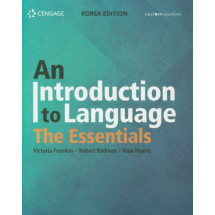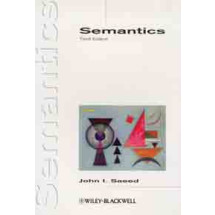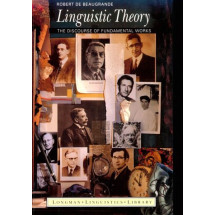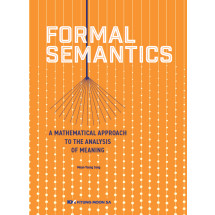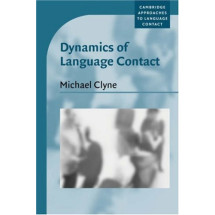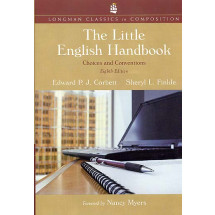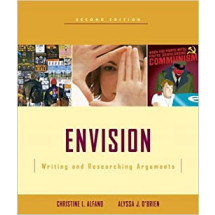PART I: The Writing Process
Chapter 1 Thinking Like a Writer
1a What is the current scene for writers?
1b What are the major purposes for writing?
1c What does "audience" mean for writing?
1d What is "tone" in writing?
1e What does "sources for writing" mean?
1f What resources can help me with writing?
1g How do computers shape the writing process?
1h What forms of writings do computers enable?
Chapter 2 Planning, Shaping, Drafting, and Revising
2a What is the writing process?
2b What terms describe different kinds of writing?
2c What is a "writing situation?"
2d How can I think through a writing topic?
2e What can I do if no ideas occur to me?
2f How do I use an idea log and a journal?
2g What is freewriting?
2h What is brainstorming?
2i What are the "journalist뭩 questions"?
2j What is mapping?
2k How can "talking it over" help?
2l How can an Internet search help?
2m How can Incubation help me?
2n How can shaping help me?
2o How can looking for "levels of generality" help me?
2p How can a subject tree help me?
2q What is a thesis statement?
2r What is outlining?
2s What can help me write a first draft?
2t How can I overcome writer's block?
2u How do I revise?
2v How do I edit?
2w How do I proofread?
2x What is collaborative writing?
2y A student essay in three drafts
Chapter 3 Writing Paragraphs
3a What is a paragraph?
3b How can I write effective introductory paragraphs?
3c What are body paragraphs?
3d How can I create unity in paragraphs?
3e How can topic sentences create paragraph unity?
3f How can I develop my body paragraphs?
3g How can I write coherent paragraphs?
3h How can I arrange a paragraph?
3i How can rhetorical strategies help me write paragraphs?
3j What is a transitional paragraph?
3k What are effective concluding paragraphs?
Chapter 4 Thinking, Reading, and Writing Critically
4a What is critical thinking?
4b How do I engage in critical thinking?
4c What is the reading process?
4d How do I engage in critical reading?
4e How do I tell the difference between summary and synthesis?
4f How do I write a critical response?
4g How do I assess evidence critically?
4h How do I assess cause and effect critically?
4i How do I assess reasoning processes critically?
4j How can I recognize and avoid logical fallacies?
Chapter 5 Writing Argument
5a What is a written argument?
5b How do I choose a topic for an argument?
5c How do I develop a claim and a thesis statement for my argument?
5d Why might I need to define key terms?
5e What is the structure of a classical argument?
5f How do I support my argument?
5g What types of appeals can provide support?
5h What is the Toulmin model for argument?
5i What part does audience play in my argument?
5j How can Rogerian argument help me reach opposing audiences?
5k What is a reasonable tone in an argument?
5l How do I handle opposing arguments?
5m How did one student draft and revise her argument essay?
5n Final draft of a student's argument essay in MLA style
Chapter 6 Critically Analyzing Images and Using Them
6a How can I view images with a critical eye?
6b How can images persuade?
6c How can I analyze words combined with images?
6d What can images add to my writing?
PART II: Understanding Grammar and Writing Correct Sentences
Chapter 7 Parts of Speech and Sentence Structures
Parts of Speech
7a Why learn the parts of speech?
7b What is a noun?
7c What is a pronoun?
7d What is a verb?
7e What is a verbal?
7f What is an adjective?
7g What is an adverb?
7h What is a preposition?
7i What is a conjunction?
7j What is an Interjection?
Sentence Structures
7k How is a sentence defined?
7l What are a subject and a predicate in a sentence?
7m What are direct and indirect objects?
7n What are complements, modifiers, and appositives?
7o What is a phrase?
7p What is a clause?
7q What are the four sentence types?
Chapter 8 Verbs
8a What do verbs do?
Verb Forms
8b What are the forms of the main verbs?
8c What is the -s, or -es, form of a verb?
8d What is the difference between regular and irregular verbs?
8e What are auxiliary verbs?
8f What are Intransitive and transitive verbs?
Verb Tense
8g What is verb tense?
8h How do I use the simple present tense?
8i How do I form and use the perfect tenses?
8j How do I form and use progressive forms?
8k How do I use tense sequences accurately?
Mood
8l What is "mood" in verbs?
8m What are subjunctive forms?
Voice
8n What is "voice" in verbs?
8o How do I write in the active, not passive, voice?
8p What are proper uses of the passive voice?
Chapter 9 Pronoun Case and Reference
Pronoun Case
9a What does "case" mean?
9b What are personal pronouns?
9c How do pronouns work in case?
9d Which case is correct when and connects pronouns?
9e How do I match cases with appositives?
9f How does case work after linking verbs?
9g When should I use who, whoever, whom and whomever?
9h What pronoun case comes after than or as?
9i How do pronouns work before infinitives?
9j How do pronouns work with -ing words?
9k What case should I use for -self pronouns?
Pronoun Reference
9l What is pronoun reference?
9m What makes pronoun reference clear?
9n How can I avoid unclear pronoun reference?
9o How do pronouns work with it, that, this, and which?
9p How do I use they and it precisely?
9q How do I use it to suit the situation?
9r When should I use you for direct address?
9s When should I use that, which,and who?
Chapter 10 Agreement
10a What is agreement?
Subject-Verb Agreement
10b What is subject-verb agreement?
10c Why is a final -s or -es in a subject or verb so important?
10d Can I ignore words between a subject and its verb?
10e How do verbs work when subjects are connected by and?
10f How do verbs work with each and every?
10g How do verbs work when subjects are connected by or?
10h How do verbs work with Inverted word order?
10i How do verbs work with Indefinite pronouns?
10j How do verbs work with collective nouns?
10k Why does the linking verb agree with the subject, not the subject complement?
10l What verbs agree with who, which,and that?
10m How do verbs work with amounts, fields of study, and other special nouns?
10n How do verbs work with titles, company names, and words as themselves?
Pronoun-Antecedent agreement
10o What is pronoun-antecedent agreement?
10p How do pronouns work when and connects antecedents?
10q How do pronouns work when or connects antecedents?
10r How do pronouns work when antecedents are indefinite pronouns?
10s How do I use nonsexist pronouns?
10t How do pronouns work when antecedents are collective nouns?
Chapter 11 Adjectives and Adverbs
11a What are the differences between adjectives and adverbs?
11b When should I use adverbs - not adjectives - as modifiers?
11c What is wrong with double negatives?
11d Do adjectives or adverbs come after linking verbs?
11e What are comparative and superlative forms?
11f Why avoid a long string of nouns as modifiers?
Chapter 12 Sentence Fragments
12a What is a sentence fragment?
12b How can I recognize a sentence fragment?
12c What are major ways of correcting fragments?
12d How can I fix a fragment that is part of a compound predicate?
12e What are the two special fragment problems?
12f How can I recognize intentional fragments?
Chapter 13 Comma Splices and Run-on Sentences
13a What are comma splices and run-on sentences?
13b How can I recognize comma splices and run-on sentences?
13c How can I correct comma splices and run-on sentences?
13d How can I correctly use a conjunctive adverb or other transitional expression between independent clauses?
Chapter 14 Misplaced and Dangling Modifiers
Misplaced Modifiers
14a What is a misplaced modifier?
14b How can I avoid split infinitives?
14c How can I avoid other splits in my sentences?
Dangling Modifiers
14d How can I avoid dangling modifiers?
14e How can I proofread successfully for misplaced and dangling modifiers?
Chapter 15 Shifting and Mixed Sentences
Shifting Sentences
15a What is a shifting sentence?
15b How can I avoid shifts in person and number?
15c How can I avoid shifts in subject and voice?
15d How can I avoid shifts in tense and mood?
15e How can I avoid shifts between Indirect and direct discourse?
Mixed Sentences
15f What is a mixed sentence?
15g How can I correct a mixed sentence due to faulty predication?
15h What are correct elliptical constructions?
15i What are correct comparisons?
15j How can I proofread successfully for little words I forget to use?
PART III: Writing Effectively
Chapter 16 Conciseness
16a What is conciseness?
16b What common expressions are not concise?
16c What sentence structures usually work against conciseness?
16d How else can I revise for conciseness?
16e How do verbs affect conciseness?
Chapter 17 Coordination and Subordination
Coordination
17a What is coordination of sentences?
17b What is the structure of a coordinate sentence?
17c What meaning does each coordinating conjunction convey?
17d How can I avoid misusing coordination?
Subordination
17e What is subordination of sentences?
17f What is the structure of a subordinate sentence?
17g What meaning does each subordinating conjunction convey?
17h How can I avoid misusing subordination?
17i How can I effectively use coordination and subordination together?
Chapter 18 Parallelism
18a What is parallelism?
18b What is a balanced sentence?
18c How do words, phrases, and clauses work in parallel form?
18d How does parallelism deliver impact?
18e How can I avoid faulty parallelism?
18f How does parallelism work in outlines and lists?
Chapter 19 Variety and Emphasis
19a What are variety and emphasis in writing?
19b How do different sentence lengths create variety and emphasis?
19c How do occasional questions, commands, or exclamations create variety and emphasis?
19d How can modifiers create variety and emphasis?
19e How does repetition affect variety and emphasis?
19f How else can I create variety and emphasis?
Chapter 20 Usage Glossary
Chapter 21 The Impact of Words
21a What is American English?
21b Whate are levels of formality in language?
21c What is edited American English?
21d What is figurative language?
21e How can using exact diction enhance my writing?
21f How can using specific words enhance my writing?
21g What is gender-neutral language?
21h What other types of language to I want to avoid?Language to avoid
21i What is regional language?
21j What are clich??
21k When is jargon unnecessary?
21l What are euphemisms?
21m what is bureaucratic language?
Chapter 22 Spelling
22a What makes a good speller?
22b How can I proofread for errors in spelling and hypen use?
22c How are plurals spelled?
22d SHow are suffixes spelled?
22e What is the ie, ei rule?
22f How are homonyms and other frequently confused words spelled?
22g What are compound words?
PART IV: Using Punctuation and Mechanics
Chapter 23 Periods, Question Marks, and Exclamation Points
Periods
23a When does a period end a sentence?
23b How do I use periods with abbreviations?
Question Marks
23c When do I use a question mark?
23d When can I use a question mark in parentheses?
Exclamation Points
23e When do I use an exclamation point?
23f What is considered overuse of exclamation points?
Chapter 24 Commas
24a What is the role of the comma?
24b How do commas work with coordinating conjunctions?
24c How do commas work with introductory clauses, phrases, and words?
24d How do commas work with items in a series?
24e How do commas work with coordinate adjectives?
24f How do commas work with nonrestrictive elements?
24g How do commas set off parenthetical expressions, contrasts, words of direct address, and tag sentences?
24h How do commas work with quoted words?
24i How do commas work in dates, names, addresses, correspondence, and numbers?
24j How do commas clarify meaning?
24k How can I avoid misusing commas?
24l How can I avoid comma errors?
Chapter 25 Semicolons
25a What are the uses of a semicolon?
25b When can I use a semicolon, instead of a period, between independent clauses?
25c When else can I use a semicolon between independent clauses?
25d How do semicolons work with coordinating conjunctions?
25e When should I use semicolons between items in a series?
25f How do I avoid misusing the semicolon?
Chapter 26 Colons
26a What are the uses of a colon?
26b When can a colon introduce a list, an appositive, or a quotation?
26c When can I use a colon between two Independent clauses?
26d What standard formats require a colon?
26e When is a colon wrong?
Chapter 27 Apostrophes
27a What is the role of the apostrophe?
27b How do I use an apostrophe to show a possessive noun?
27c How do I use an apostrophe with possessive pronouns?
27d How do I use an apostrophe with contractions?
27e How do I use an apostrophe with possessive Indefinite pronouns?
27f How do I form the plural of miscellaneous elements?
27g When is an apostrophe wrong?
Chapter 28 Quotation Marks
28a What is the role of quotation marks?
28b How do I use quotation marks with short direct quotations?
28c Are quotation marks usd with long quotations?
28d How do I use quotation marks for quotations within quotations?
28e How do I use quotation marks for quotations of poetry and dialogue?
28f How do I use quotation marks with titles of short works?
28g How do I use quotation marks for words used as words?
28h How do I use quotation marks with other punctuation?
28i When are quotation marks wrong?
Chapter 29 Other Punctuation Marks
Dash
29a When can I use a dash in my writing?
Parentheses
29b When can I use parentheses in my writing?
Brackets
29c When do I need to use brackets in my writing?
Ellipsis points
29d How do I use ellipsis points in my writing?
Slash
29e When can I use a slash in my writing?
Hyphen
29f When do I need a hyphen in my writing?
29g When do I use a hyphen at the end of a line?
29h How do I use a hyphen with prefixes and suffixes?
29i How do I use hyphens with compound words?
Chapter 30 Capitals, Italics, Abbreviations, and Numbers
Capitals
30a When do I capitalize a "first" word?
30b When do I use capitals with listed items?
30c When do I use capitals with sentences in parentheses?
30d When do I use capitals with quotations?
30e When do I capitalize nouns and adjectives?
Italics
30f What are iitalics?
30g How do I choose between using italics and quotation marks?
30h Can I use italics for special emphasis?
Abbreviations
30i What are standard practices for using abbreviations?
30j How do I use abbreviations with months, time, eras, and symbols?
30k How do I use abbreviations for other elements?
30l When can I use etc.?
Numbers
30m When do I use spelled-out numbers?
30n What are standard practices for writing numbers?
30o How do I use hyphens with spelled-out numbers?
PART V: Writing Research
Chapter 31 Research Writing as a Process
31a What is research writing?
31b How do I schedule a research project?
31c What is a research log?
31d How do I choose and narrow a research topic?
31e What is a research question?
31f How do I determine the purpose and audience for my research paper?
31g What practical steps can help me work efficiently?
31h What documentation style should I use?
31i What is a working bibliography?
31j. What is an annotated bibliography?
31k How do I take content notes?
31l How do I draft a thesis statement for a research paper?
31m How do I outline a research paper?
31n How do I draft a research paper?
31o How do I revise a research paper?
Chapter 32 Finding and Evaluating Sources
32a What is a source?
32b What is a search strategy?
32c What is field research?
32d How do I find library-based sources?
32e How do I use reference works?
32f How do I find government documents?
32g What if my library doesn't have a source I need?
32h How do I evaluate sources?
32i What should I know about searching the Web?
32j How do I search the Web?
32k How do I evaluating Web sources?
Chapter 33 Using Sources and Avoiding Plagiarism
33a How do I use sources well?
33b What is plagiarism?
33c How do I avoid plagiarism?
33d How do I work with Internet sources to avoid plagiarism?
33e Why don't I have to document?
33f What must I document?
33g How can I effectively integrate sources into my writing?
33h How can I use quotations effectively?
33i How can I write good paraphrases?
33j How can I write good summaries?
33k Which verbs can help me weave source material into my sentences?
Chapter 34 MLA Documentation with Case Study
34a What is MLA style?
34b What is MLA in-text parenthetical documentation?
34c What are MLA guidelines for parenthetical documentation?
34d What are MLA guidelines for a Works Cited list?
34e A student's MLA-style research paper
Chapter 35 APA Documentation with Case Study
35a What is APA documentation style?
35b What are APA parenthetical in-text citations?
35c What are APA guidelines for in-text citations?
35d What are APA guidelines for writing an abstract?
35e What are APA guidelines for content notes?
35f What are APA guidelines for a References list?
35g What are APA format guidelines for research papers?
35h A student's APA-style research paper
Chapter 36 CM, CSE, and COS Documentation
CM-style Documentation
36a What is CM-style documentation?
36b What are CM guidelines for bibliographic notes?
CSE-style Documentation
36c What is CSE-style documentation?
36d What are CSE guidelines for sources on a list of references?
PART VI: Writing Across the Curriculum뾞nd Beyond
Chapter 37 Comparing the Disciplines
37a What is writing across the curriculum?
37b What are primary research and secondary research in the disciplines?
37c What can help me write assignments in various disciplines?
37d How do I use documentation in the disciplines?
Chapter 38 Writing About the Humanities and Literature
38a What are the humanities?
38b What types of sources do I use in the humanities?
38c What types of papers do I write in the humanities?
38d Which documentation style do I use to write about the humanities?
38e What is literature?
38f Why write about literature?
38g What general strategies can help me write about literature?
38h How do I write different types of papers about literature?
38i What special rules apply to writing about literature?
38j Sample student essays
Chapter 39 Writing in the Social Sciences and Natural Sciences
Social Sciences
39a What are the social sciences?
39b What kinds of sources do I use in the social sciences?
39c What are writing purposes and practices in the social sciences?
39d What are different types of papers in the social sciences?
39e What documentation style should I use in the social sciences?
Natural Sciences
39e What are the natural sciences?
39f What are writing purposes and practices in the natural sciences?
39g What documentation style should I use in the natural sciences?
39h How do I write different types of papers in the natural sciences?
Chapter 40 Business and Public Writing
Business Writing
40a Who writes in the workplace?
40b What are typical policies concerning business writing?
40c What are legal considerations concerning business writing?
40d What are special considerations concerning business e-mail?
40e How do I format and write memo?
40f How do I write business letters?
40g How do I write a resume?
40h How do I write a job application letter?
40i How do I write a business proposal?
40j How do I prepare an informal meeting agenda?
40k How do I write informal meeting minutes if I'm a new employee?
40l What is public writing?
40m How do I write reports for the public?
40n How do I write letters to my community or its officials?
40o What other types of public writing exist?
40p What is a blog?
Chapter 41 Making Oral Presentations and Using Multimedia
41a What are oral presentations?
41b How does my purpose focus my presentation?
41c How do I adapt my message to my listening audience?
41d How do I organize my presentation?
41e How do I research and write a presentation?
41f How do I incorporate multimedia into my oral presentation?
41g How do I plan for multimedia in my presentation?
41h What presentation styles can I use?
41i How do I use my voice effectively?
41j How do I use nonverbal communication?
41k What can I do to practice for my oral presentation?
41l How do I overcome stage fright?
41m How do I make a collaborative presentation?
Chapter 42 Document and Visual Design
42a What is visual design?
42b What are basic principles of design?
42c How do I design with text?
42d How do I use headings?
42e How do I use borders?
42f How should I incorporate graphics?
42g What is page layout?
Chapter 43 Writing for the Web
43a What is writing for the Web?
43b What is the Web writing process?
43c How do I plan content for my Web site?
43d How do I create a structure for my Web site?
43e How do I design Web pages?
43f How do I use Web writing software?
43g How do I incorporate images into Web pages?
43h What precautions do I need to take while using images I find?
43i How do I edit my page and test usability?
43j How do I display my Web page?
43k How do I maintain my Web site?
43l How else can I publish on the Web?
PART VII: Writing When English Is a Second Language
Chapter 44 Multilingual Students Writing Essays in US Colleges
44a How is writing taught in US colleges?
44b How does my past writing experience affect my writing in English?
44c How can I know what my instructor expects in my writing?
44d How should I organize my writing?
44e How can I use other writers?work to improve my writing?
44f What kind of dictionary should I use?
44g What should I do with my classmates?and instructor뭩 comments?
44h Where can I find strategies for editing my work?
44i How can I set long-term goals for my writing?
Chapter 45 Handling Sentence-Level Issues in English
45a How can I improve the grammar and vocabulary in my writing?
45b How can I improve my sentence structure?
45c How can I improve my word choice (vocabulary)?
45d How can I find and correct errors in my own writing?
45e How can I correct verb form (tense) errors in my writing?
45f How can I correct my errors in subject-verb agreement?
45g How can I correct my singular/plural errors?
45h How can I correct my preposition errors?
45i What other kinds of errors might I make?
45j How can I keep track of my most common errors?
45k How can I improve my proofreading skills?
Chapter 46 Singulars and Plurals
46a What are count and noncount nouns?
46b How do I use determiners with singular and plural nouns?
46c How do I use one of, nouns as adjectives, and states in names or titles?
46d How do I use nouns with irregular plurals?
Chapter 47 Articles
47a How do I use a, an, or the with singular count nouns?
47b How do I use articles with plural nouns and with noncount nouns?
47c How do I use the with proper nouns and with gerunds?
Chapter 48 Word Order
48a How do I understand standard and inverted word order in sentences?
48b How can I understand the placement of adjectives?
48c How can I understand the placement of adverbs?
Chapter 49 Prepositions
49a How can I recognize prepositions?
49b How do I use prepositions with expressions of time and place?
49c How do I use prepositions in phrasal verbs?
49d How do I use prepositions with past participles?
49e How do I use prepositions in expressions?
Chapter 50 Gerunds, Infinitives, and Participles
50a How can I use gerunds and infinitives as subjects?
50b When do I use a gerund, not an infinitive, as an object?
50c When do I use an infinitive, not a gerund, as an object?
50d How does meaning change when certain verbs are followed by a gerund or an infinitive?
50e Why is the meaning unchanged whether a gerund or an infinitive follows sense verbs?
50f How do I choose between -ing and -ed forms for adjectives?
Chapter 51 Modal Auxiliary Verbs
51a How do I convey ability, necessity, advisability, possibility, and probability with modals?
51b How do I convey preferences, plans, and past habits with modals?
51c How can I recognize modals in the passive voice?
Terms Glossary
List of Boxes by Content
Credits
ESL Index
Index
LYNN QUITMAN TROYKA, Professor of Writing, at the City University of New York (CUNY), has taught at Queensborough Community College and in the graduate Language and Literacy program at City College. Former editor of the Journal of Basic Writing, her writing and research appears in major journals and various scholarly collections. She conducts workshops in the teaching of writing. Lynn is co-author of Quick Access Reference for Writers, Fifth Edition, Prentice Hall (2007), QA Compact, First Edition, Prentice Hall (2007), Canadian editions of her Simon & Schuster Handbook for Writers and Quick Access Reference for Writers, Structured Reading, Seventh Edition, Prentice Hall (2007), and Steps in Composition, Eighth Edition, Prentice Hall (2004). Dr. Troyka received the 2001 CCCC Exemplar Award, the highest CCCC award for scholarship, teaching, and service; the Rhetorician of the Year Award; and the TYCA Pickett Award for Service. She is a past chair of the Conference on College Composition and Communication (CCCC); the Two-Year College Association (TYCA) of the National Council of Teachers of English (NCTE); the College Section of NCTE; and the Writing Division of the Modern Language Association. ”This information,” says Dr. Troyka, “tells what I’ve done, not who I am. I am a teacher. Teaching is my life’s work, and I love it.”
DOUG HESSE, Professor of English and Director of Writing at the University of Denver as of fall 2006, previously held several positions at Illinois State University, including Director of the Honors Program, Director of Writing Programs, and Director of the Center for the Advancement of Teaching. Dr. Hesse earned his Ph.D. from the University of Iowa. In addition to teaching at Illinois State, he’s also taught at the University of Findlay, Miami University (as Wiepking Distinguished Visiting Professor), and Michigan Tech. Dr. Hesse has had numerous national leadership roles in the teaching of writing. He is past Chair of the Conference on College Composition and Communication (CCCC), the nation’s largest professional association of college writing instructors. A past president, as well, of the Council of Writing Program Administrators (WPA), Hesse edited that organization’s journal, Writing Program Administration. He is a member of the National Council of Teachers of English (NCTE) Executive Committee and the Modern Language Association (MLA) Division on Teaching as a Profession Executive Committee. He is the author of 45 articles and book chapters, in such journals as College Composition and Communication, College English, JAC, Rhetoric Review, the Journal of Teaching Writing, and others, and in such books as Essays on the Essay; Writing Theory and Critical Theory; The Writing Program Administrator’s Sourcebook; Literary Nonfiction; The Private, the Public, and the Published; Passions, Pedagogies, and 21st Century Technologies; and others. He is also co-author, with LynnTroyka, of the Quick Access Reference for Writers, Fifth Edition, Prentice Hall (2007) and Quick Access Compact, First Edition, Prentice Hall (2007). Illinois State University named him Outstanding University Researcher. “Of all these accomplishments,” says Dr. Hesse, “the one that matters most to me is being named Distinguished Humanities Teacher at Illinois State. That one came from my students and suggests that, in however small a way, I’ve mattered in their educations and lives.”


